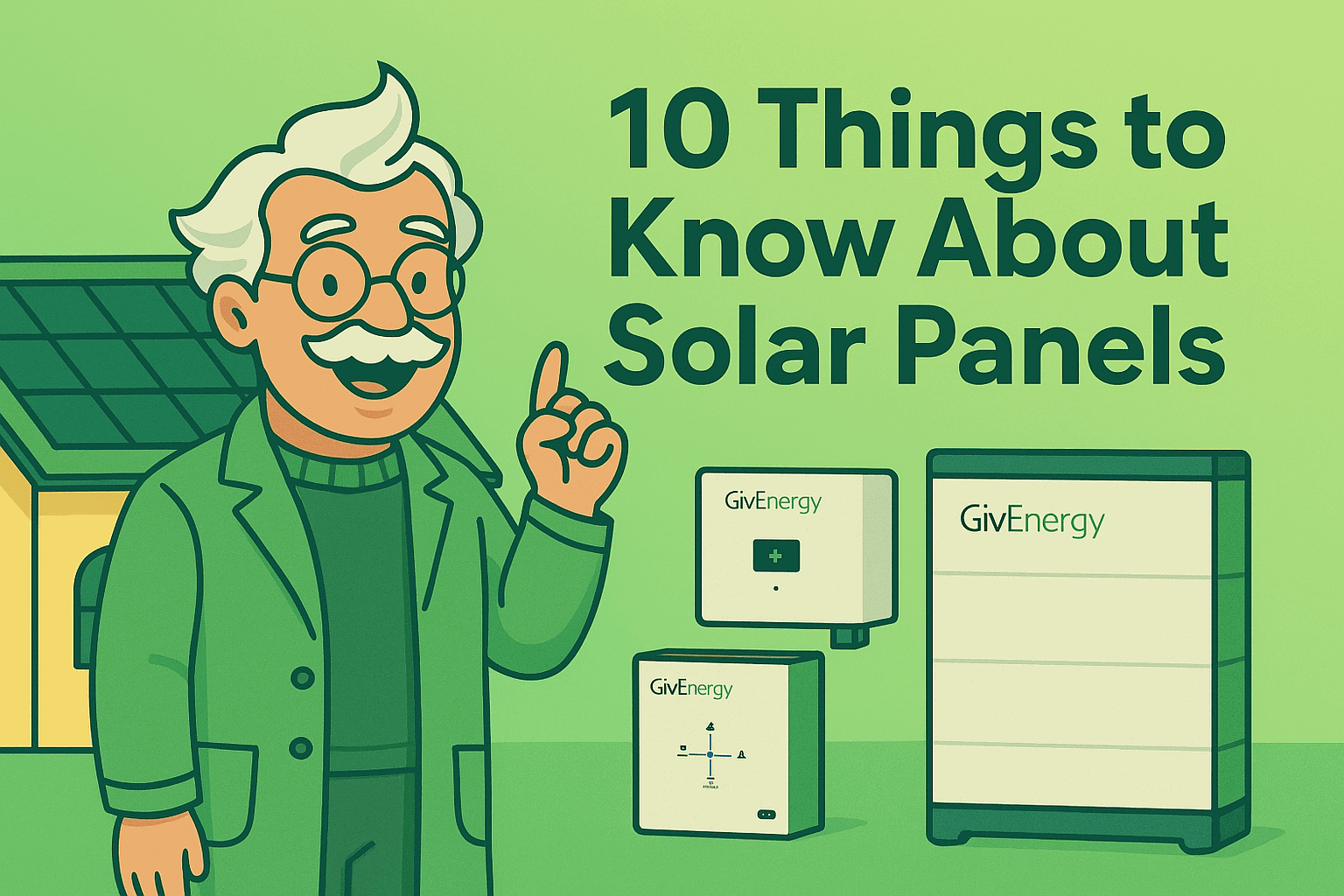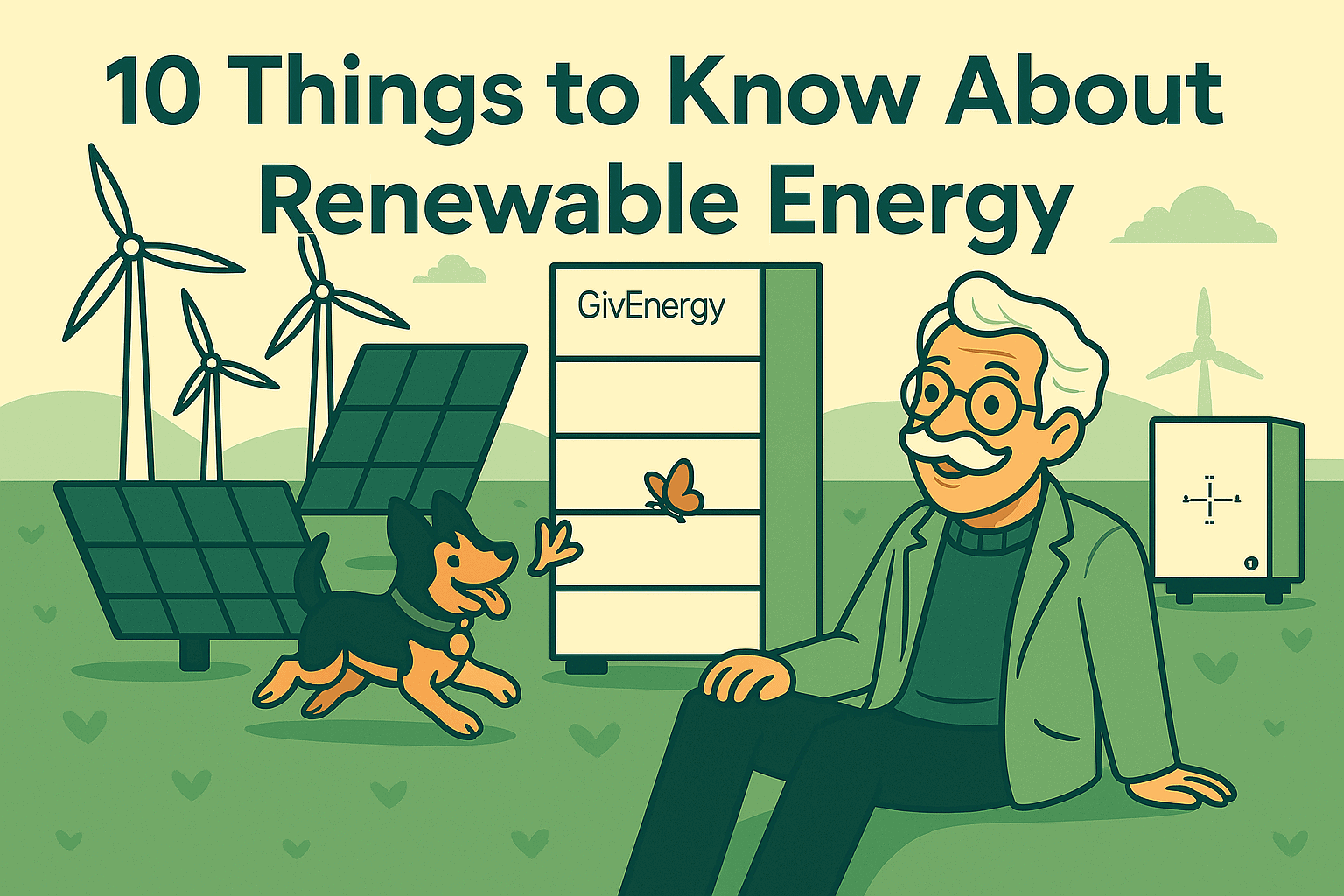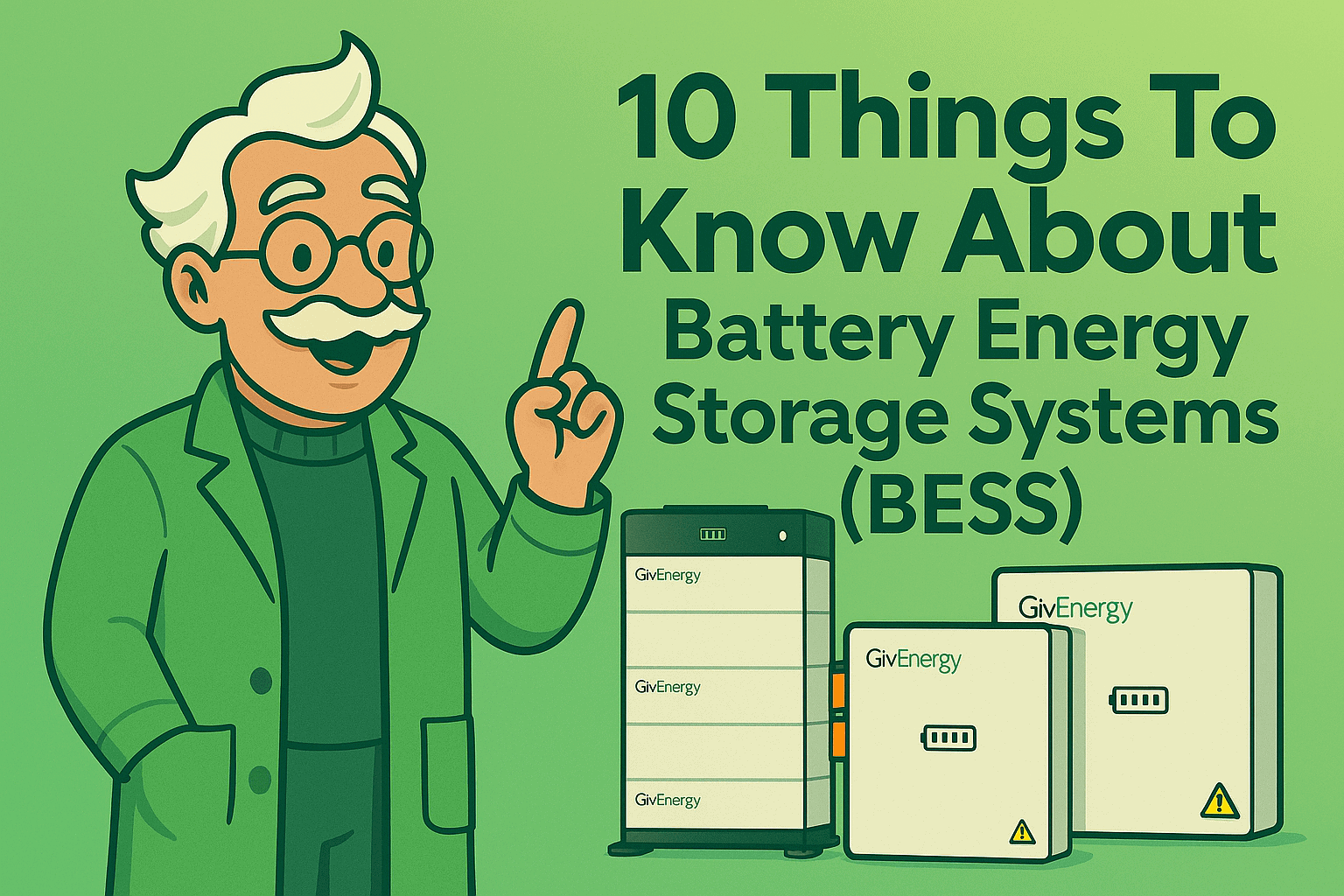Fun facts, tips, and tech to help you make the most of your solar setup.
Thinking about getting solar panels? You’re not alone. With rising energy bills and growing interest in renewable energy, solar panels are one of the most popular upgrades for many homes and businesses.
1. Solar panels have been around longer than you think
Solar power isn’t new. In fact, solar panel technology dates back to the 1950s and has been commercially viable since the 1970s. What’s changed is efficiency, affordability, and widespread availability, especially here in the UK.
2. They still work on cloudy days
Contrary to popular belief, solar panels don’t need blazing sunshine to generate power. They work using light, not heat, meaning they can still produce electricity even when it’s overcast!
3. South-facing roofs are ideal, but not essential
A south-facing roof at a 30° to 40° angle is the gold standard, but east- and west-facing roofs can still yield excellent results. To understand if your roof is suitable for a solar setup, it’s best to get a professional installer to assess your roof’s orientation, pitch, and shading to design the most efficient system for your home.
4. You don’t need a massive roof
You can start small. A typical UK solar panel is about 1.7m² and generates around 350W. A modest 3kW to 4kW system (8 to 12 panels) fits comfortably on most average-sized rooftops.
5. There are different types of solar panels
Not all solar panels are the same, with the most common types include:
- Monocrystalline: High efficiency and sleek black design
- Polycrystalline: Slightly cheaper, lower efficiency
- Thin-film: Flexible but less efficient
At the moment, most solar-ready homes use monocrystalline panels due to their efficiency, space-saving design and long lifespan.
6. Solar panels don’t work alone
To get usable electricity, you’ll need an inverter to convert the panels’ DC output into AC for your home. That’s where hybrid inverters shine, especially if you plan to add a battery later or want smart energy management from the start.
7. Solar battery storage boosts your savings
Without a battery, unused solar energy is typically sent back to the grid. With a battery, you can store that energy and use it later, such as at night or during power cuts; helping you maximise grid independence and savings.
8. You may still be eligible for export payments
Thanks to the Smart Export Guarantee (SEG) and Feed-in-Tariff (FiT), you can get paid for excess energy you export or ‘sell back’ to the grid. Rates vary depending on energy operator, so it’s worth shopping around.
9. Planning permission is usually not needed
In most cases, solar panels are classed as ‘permitted development’, so no planning permission is required. The main exceptions include listed buildings, conservation areas, or installing panels on a flat roof.
10. The quality of your installer matters
A good system is only as good as the person who installs it. Make sure your installer is MCS-certified, follows UK regulations, and designs the system based on your home’s unique layout and energy needs, not a one-size-fits-all package.
Conclusion: Make your solar panels work harder
Solar panels are a brilliant way to reduce your carbon footprint, lower your bills, and gain energy independence, but they’re only one part of the puzzle.
To truly unlock the value of solar, pair your panels with:
- GivEnergy Stackable Batteries: Lets you store and scale your energy for when you need it most
- GivEnergy Hybrid Inverter: Seamlessly managing solar, battery, and grid power





